LOOK: 50 years ago, Chile’s army ousted a president and everything changed
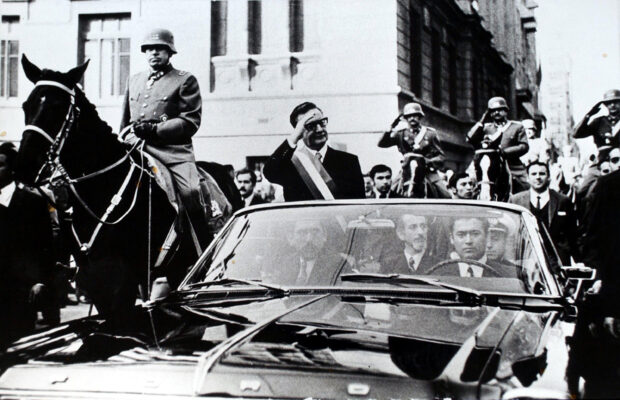
FILE PHOTO: Chilean President Salvador Allende salutes from an open vehicle as General Augusto Pinochet rides on horseback at left in Santiago, Chile, May 21, 1972. (AP Photo/File)
Fifty years ago, Chile began the darkest period in its modern history.
On September 11, 1973, Gen. Augusto Pinochet led a military coup that included the bombing of La Moneda, the presidential palace in the capital of Santiago, where President Salvador Allende had taken refuge.
Allende, a socialist who had won the presidency in 1970, died by suicide during the assault that ended his three-year administration, which was marked by economic turmoil and conflict with Washington over fears he would install a communist government.
The Associated Press registered images of what happened after the coup.
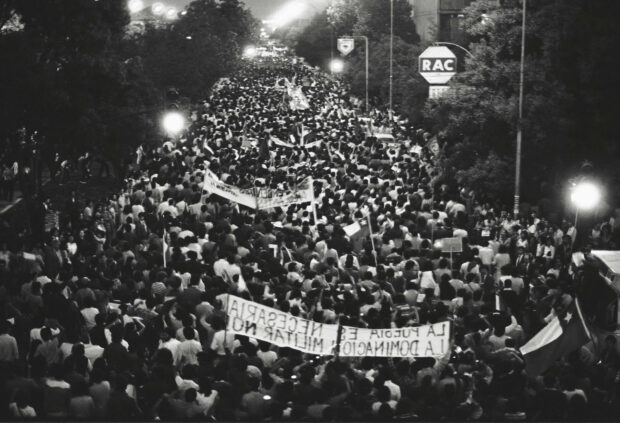
People march along Matta Avenue to protest the dictatorship of General Augusto Pinochet in Santiago, Chile, in November 1982. (AP Photo/Marco Ugarte)
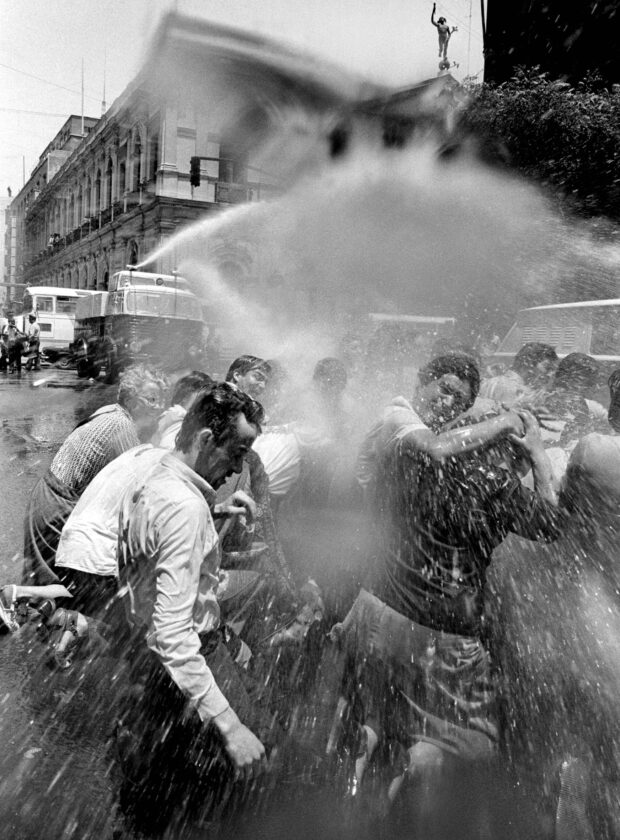
Water with tear gas mixed in is fired by police at protesters from the Movement Against the Torture of Sebastián Acevedo outside El Mercurio newspaper in downtown Santiago, Chile, November 24, 1983. (AP Photo/Marco Ugarte)
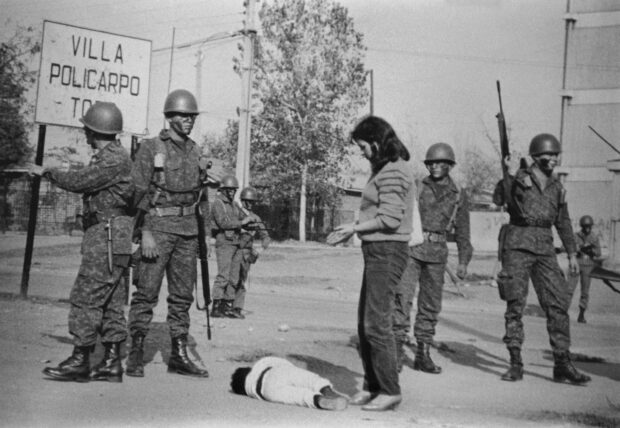
A woman’s son lays on the ground crying after his father was arrested as soldiers carry out a military operation in the San Miguel area of Santiago, Chile, in May 1986. (AP Photo/Marco Ugarte)
A junta, led by Pinochet, proceeded to pursue free-market reforms that included the privatization of state companies, and it severely limited political freedoms and repressed opposition to the military government. Street protests were brutally broken up, and opponents were sent to detention centers where they were tortured. Thousands were killed and disappeared.
Article continues after this advertisementAt least 200,000 Chileans went into exile.
Article continues after this advertisementIvonne Saz, 75; José Adán Illesca, 74; and Sergio Naranjo, 69, were expelled from their homeland after enduring months-long detentions as members of Chile’s Revolutionary Left Movement, a guerrilla group that no longer exists.
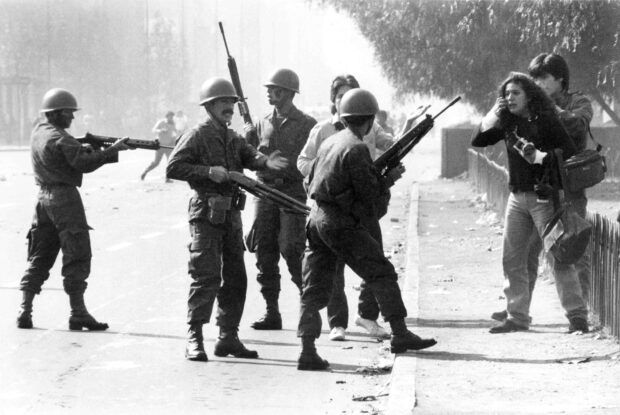
Army soldiers detain journalists during a peace demonstration along the Alameda avenue in downtown Santiago, Chile, May 20, 1986. (AP Photo/Marco Ugarte)
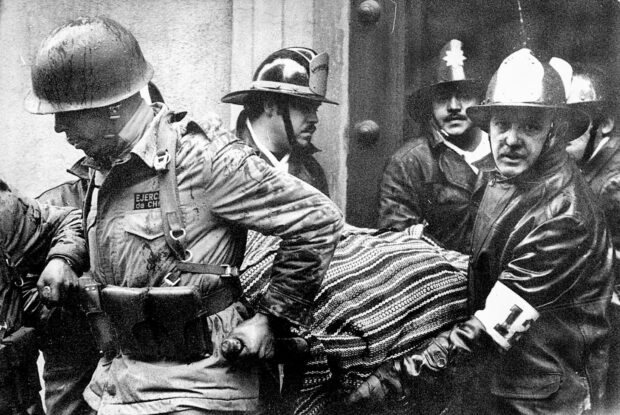
FILE PHOTO: Soldiers and firefighters carry the body of Chilean President Salvador Allende, wrapped in a Bolivian poncho, out of La Moneda presidential palace after it was bombed during a coup by Gen. Augusto Pinochet in Santiago, Chile, September 11, 1973. (AP Photo/El Mercurio, File)
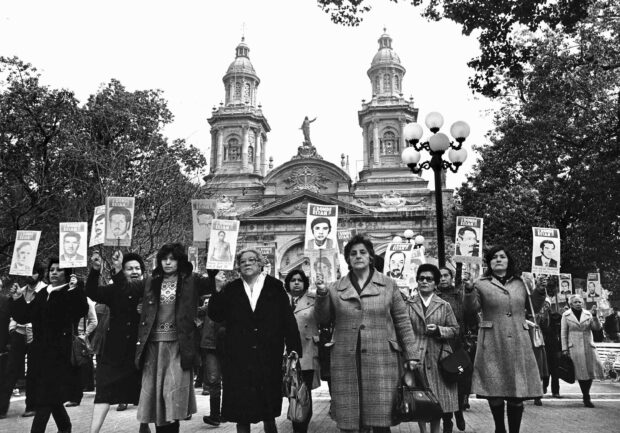
Women protest holding photos of relatives who have been arrested and are missing, in the main plaza of Santiago, Chile, in 1983. (AP Photo/Marco Ugarte)
All three went to Mexico, where they began a new life and where they continue to live. Being exiles had made them question who they were.
“This idea of exile, you feel devastated, you feel like your identity is being stolen,” Naranjo recalled. “It’s a loss of your identity.”
During the dictatorship, relatives of the disappeared took to the streets holding photos of missing loved ones and demanding answers. Late last month, leftist President Gabriel Boric unveiled what will effectively be the first state-sponsored plan to try to locate the approximately 1,162 dictatorship victims still unaccounted for.
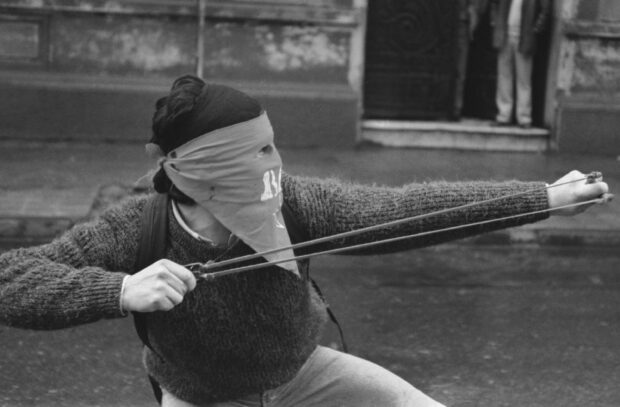
A protester aims a sling shot at police in Santiago, Chile, in September 1989. (AP Photo/Marco Ugarte)
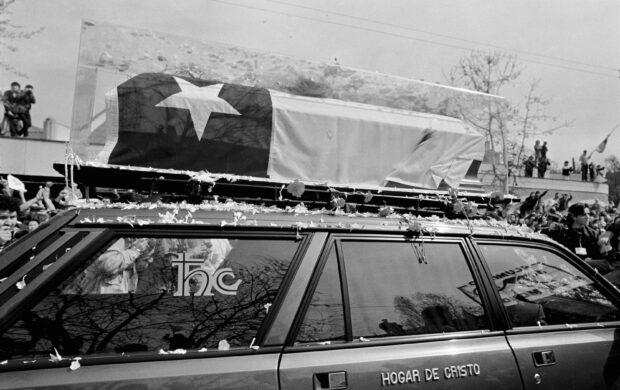
The body of ousted Chilean President Salvador Allende is transported to the General Pantheon along the main Alameda avenue in Santiago, Chile, September 4, 1990, for presidential honors and reburial. Allende’s remains were previously in an unmarked grave in Viña del Mar after 17 years. (AP Photo/Marco Ugarte)
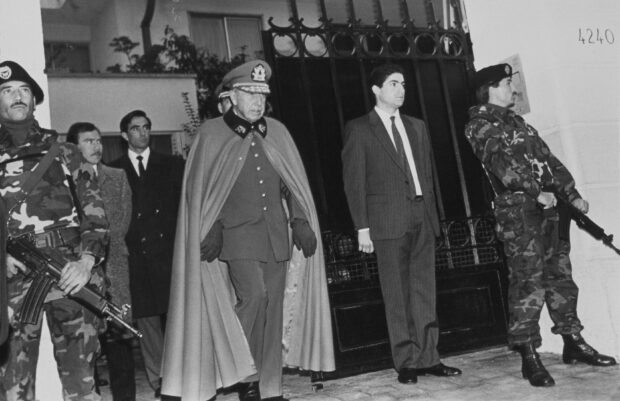
Gen. Augusto Pinochet exits his home, surrounded by security guards in Santiago, Chile, on September 7, 1986, the day after he survived an assassination attempt by the guerrilla group, Manuel Rodríguez Patriotic Front. (AP Photo/Marco Ugarte)
As the years went by, opposition to the junta grew and numerous unsuccessful assassination attempts targeted Pinochet. In 1988, Chileans voted against extending his presidency and he stepped down in 1990. After that, Allende’s remains were taken from an unmarked grave and given a dignified burial.
Pinochet remained the army’s commander in chief until 1998 and later became a lifelong senator, a position he created for himself. He resigned that post in 2002 and died in 2006 without ever facing trial, although he was detained for 17 months in London on the order of a Spanish judge. He did not receive a state funeral.
RELATED STORIES
Bound for jail over 1973 murder, Chile general kills self
Son stolen at birth hugs Chilean mother for first time in 42 years